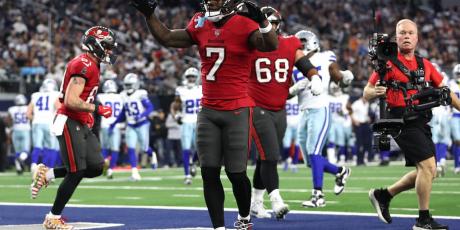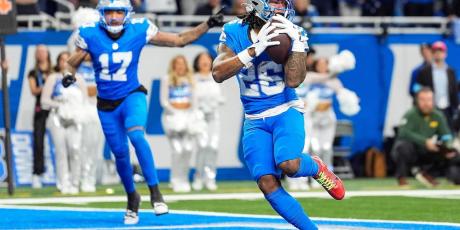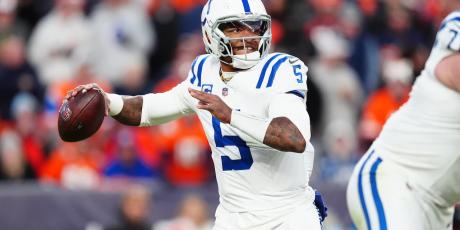DRAFT Weekly DFS Strategy

Daily fantasy sports (DFS) has come a long way since its inception in the mid-2000's. FanDuel and DraftKings were founded in 2009 and 2011, respectively, sparking a fresh take on the already popular world of fantasy sports. These two industry leaders have held the market share of DFS for several years, but are very similar in their approach and product.
Smaller fantasy sports-related companies began to form over the years, and with them, new ideas on how to keep fantasy degenerates motivated and attentive. Enter DRAFT, a fairly young DFS site offering a new and exciting approach to playing weekly games. Instead of your standard salary cap-driven contests, DRAFT boasts a collection of mini-drafts of varying sizes and team amounts.
Each draft is done snake-style with a differing amount of participants per contest. Players can choose from H2H, 3-team, 6-team, 10-team, large tournaments entitled “dream team”, as well as the ability to create your own contest. In each format, players draft just five guys for their weekly roster: 1QB, 2RBs and 2WR/TEs. There is a short clock of only 30 seconds per pick. Using an all draft-style approach eradicates the reliance on ownership percentages, takes away the stress of dealing with salary caps, and allows you to relive the fun of drafting each and every week.
Below I’ll go through some tactics for DRAFT’s different contests, as they present unique challenges and strategies that differ from redraft or standard DFS. As always, be sure to use 4for4's rankings each week to determine which players are expected to be among the highest scoring.
H2H
Since there is a total of only 10 players drafted, the main strategy here is to outscore your opponent. No need to get cute and contrarian, just draft the players who you think will score the most points that week. Knowing that only two signal-callers are selected, it benefits you to wait on quarterback until your last pick, so that you’re guaranteed to get the other position players you want.
3-team
Adding a third person doesn’t really change the way to approach these DRAFT contests, it’s just a small tweak. In a 3-team draft, you are either selecting two players back-to-back or are sandwiched between two players who are doing so. The player pool is still pretty small at just 15, so you still want to draft the players who are predicted to have the most points.
6-team & 10-team
In these larger contests, your mentality has to switch a bit, closer to that of a season-long redraft approach. Since they are done snake-style, planning at least one move ahead will benefit your bottom line here.
Think about the possibility of stacking quarterbacks with their wide receivers or tight ends, or even running backs if they are efficient pass-catchers facing a porous defense. Since your roster consists of only five players, you don’t want to draft three players from the same team, but two with solid chemistry could pay off.
With only 30 seconds to make a selection, it can be tough to keep track of what the other teams are doing; however, knowing when they are taking certain positions can benefit your roster and help shape how your draft pans out. For example, say Marcus Mariota is the top chalk quarterback for that particular week, and he’s projected to outscore all other quarterbacks by a significant amount of points. Your opponents, who are randomly matched in the contest, may or may not know this information. If they were to draft the usual suspects at quarterbacks early, like Aaron Rodgers, Tom Brady, or Drew Brees, you can wait a bit on your quarterback, knowing they can’t draft another one in this format, even if they wanted to. Same goes for any position player, as you are drafting only five players per contest. Try to pay attention to the volume of running backs, wide receivers, and tight ends going off the board to determine the priority of each one as it relates to your squad.
Finally, when it comes to tight ends in these type of contests, you’re really only looking at the top few. Remember, you are going for highest score possible from five players. After Rob Gronkowski, Travis Kelce, and sometimes Jordan Reed, there aren’t many tight ends who will outscore wide receivers in a given week.
Dream Team
These are closest to the GPP contests found on your typical DFS sites, and consist of a larger volume of players seeking the big bucks. They appear in varying amounts of participants, ranging from just three players, up to 556. Dream Team contests are not done snake-style but consist of a pick em’ format with the same five roster spots: 1QB, 2RBs, 2WR/TEs.
In order to differentiate yourself from the pack, you’ll need one contrarian pick, someone who’s not total chalk, but has the floor and upside to get you to that high point total. Since there are only five players on your roster, you don’t want to get too cute, as you will need some chalk players to ensure a chance of cashing.
Bottom Line
DRAFT presents an enjoyable alternative to your standard cookie-cutter DFS sites. They also offer plenty of season-long best-ball contests that run throughout the summer, featuring varying player amounts with many different levels of investment.
One important thing to note is that DRAFT is an app first, and their mobile version has more features and applications, making it much more user-friendly than their website.






















